As beautiful as Impressionist paintings can be, these paintings were not always immediately well accepted. The term “impression” was first used by the critic Louis Leroy in 1847 to describe Claude Monet’s Sunrise. He called Monet’s painting a sketch or impression and not a “finished painting.” This slight was the informal beginning of the Impressionism Art Movement.
Fast forward to today, Impressionism is seen as a raw expression of how an Impressionist sees the subject. Impressionists do not aim to give the audience the exact replica of reality. Perhaps that might be too boring or merely photographic. Impressionists try to tell the viewer how they feel about the light, the colours, the shadows and their merging to create the subject they see. Impressionism is when the subject is seen through fantasy but light is seen for what it truly is.
What type of art was created during the Impressionism art movement?
Oil on canvas was mostly used to make Impressionist paintings.
Impressionist art was created and popular during which years?
Around the 1840s, Impressionism paintings began to appear and became more popular with time.
Where was Impressionist art made and popularised?
Impressionist artworks were made in France, Italy and other parts of Europe
Who are some famous Impressionist artists and artworks?
Impression Sunrise by Claude Monet
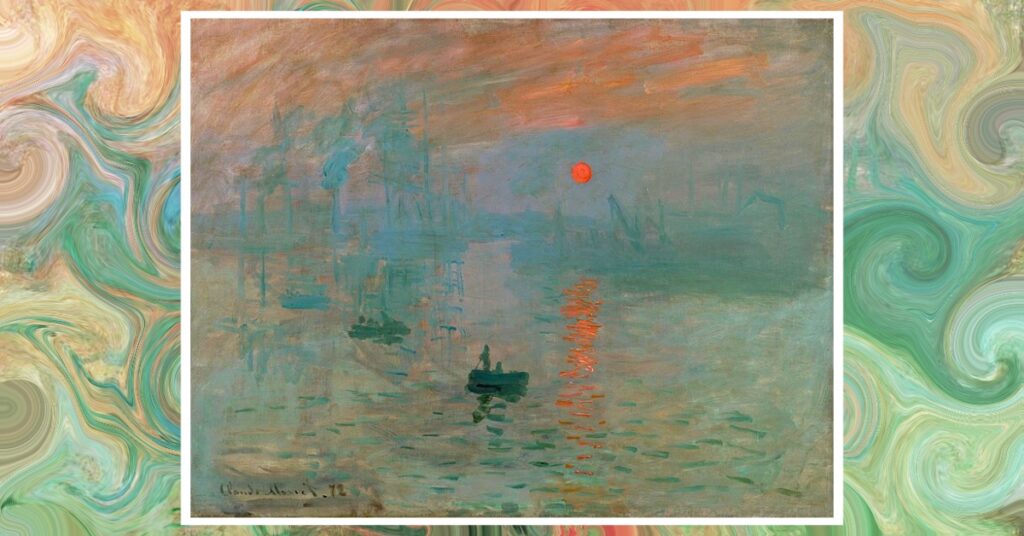
Lydia leaning on her arms by Mary Cassatt
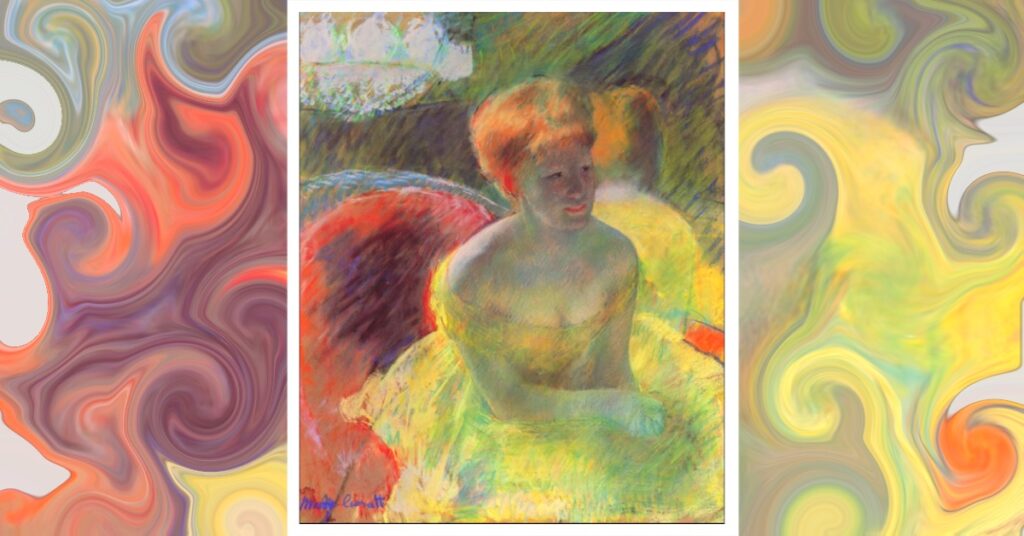
Hay Harvest at Éragny by Camille Pissarro
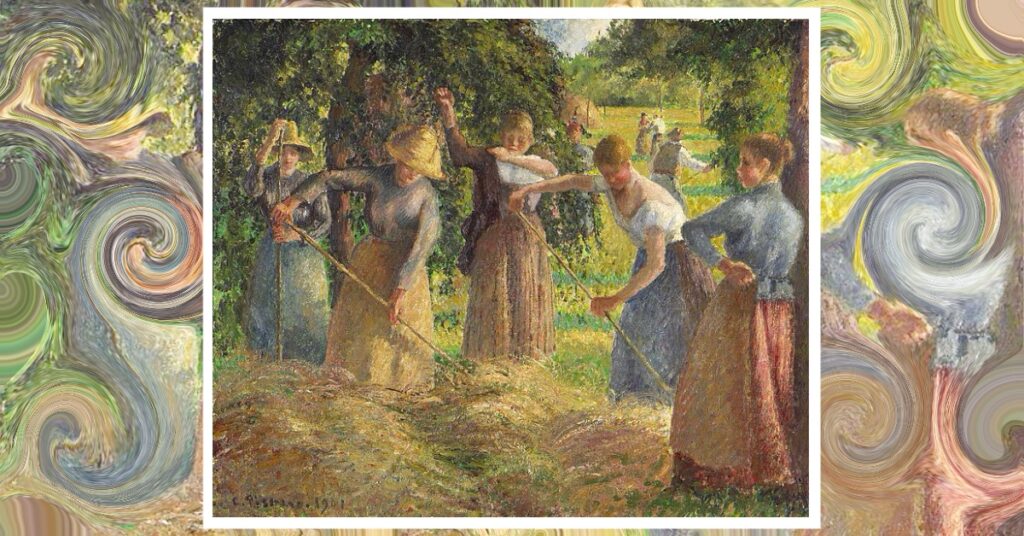
Which art movement(s) came before Impressionism?
En plein air or the act of painting outdoors might have been one of the inspirations for Impressionism since a realistic depiction of sunlight is one of the main features of Impressionism.
Which art movement(s) came after Impressionism?
Post-impressionism came after the Impressionist art movement.
Top 9 Artworks of the Impressionist Art Movement
The Impressionist art movement, which emerged in the 19th century, was a grave departure from Realism. Impressionists aimed to capture the fleeting moments of life, the interplay of light and colour, and the essence of their subjects. They were the least bit concerned about painting the scene true to reality. Let’s explore famous paintings of the Impressionist era that have left an indelible mark on the world of art, offering a glimpse into the lives and creative processes of these remarkable artists.
Impression Sunrise by Claude Monet
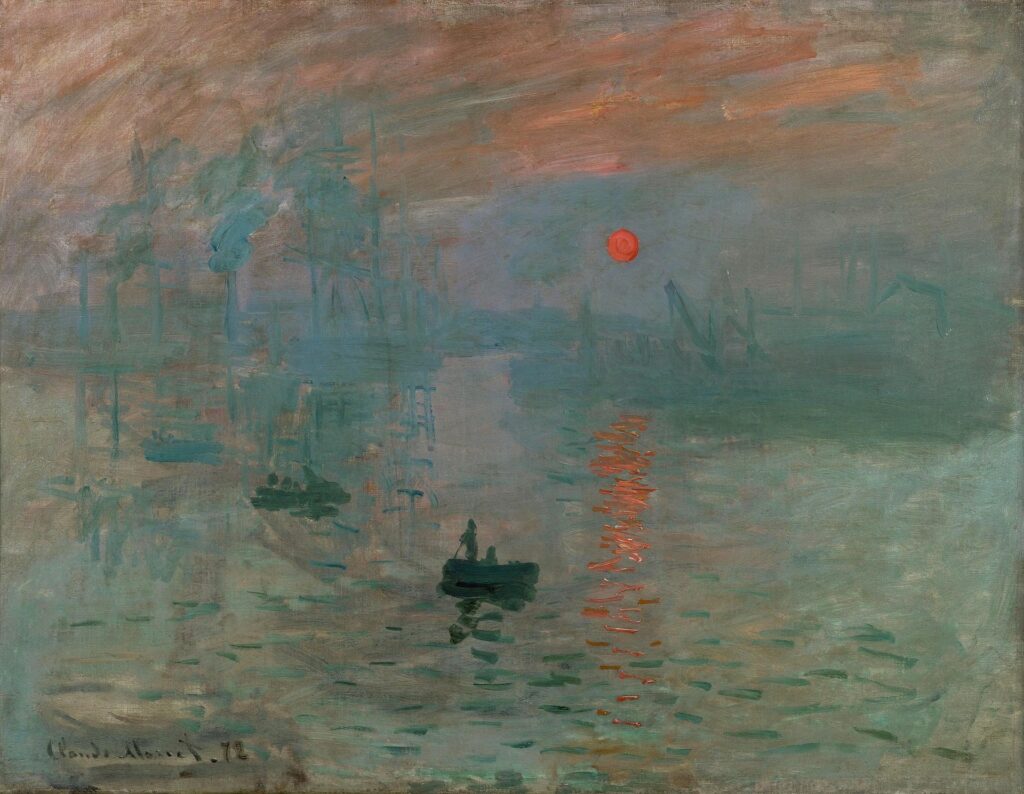
Claude Monet’s “Impression, Sunrise” (1872) is often considered the painting that gave the Impressionist movement its name. The artwork features a hazy harbour scene with the rising sun in the background, casting its golden light on the water. The depiction of the sunrise and the fleeting moment of the scene embodies the essence of Impressionism.
“Impression Sunrise” was exhibited at the First Impressionist Exhibition in 1874, and it was greeted with mixed reviews. Critic Louis Leroy famously coined the term “Impressionism” in a satirical review of the exhibition, using the title of Monet’s painting to describe the movement as a whole. Monet’s work ultimately gave the movement its name and identity.
Starry Night by Vincent van Gogh
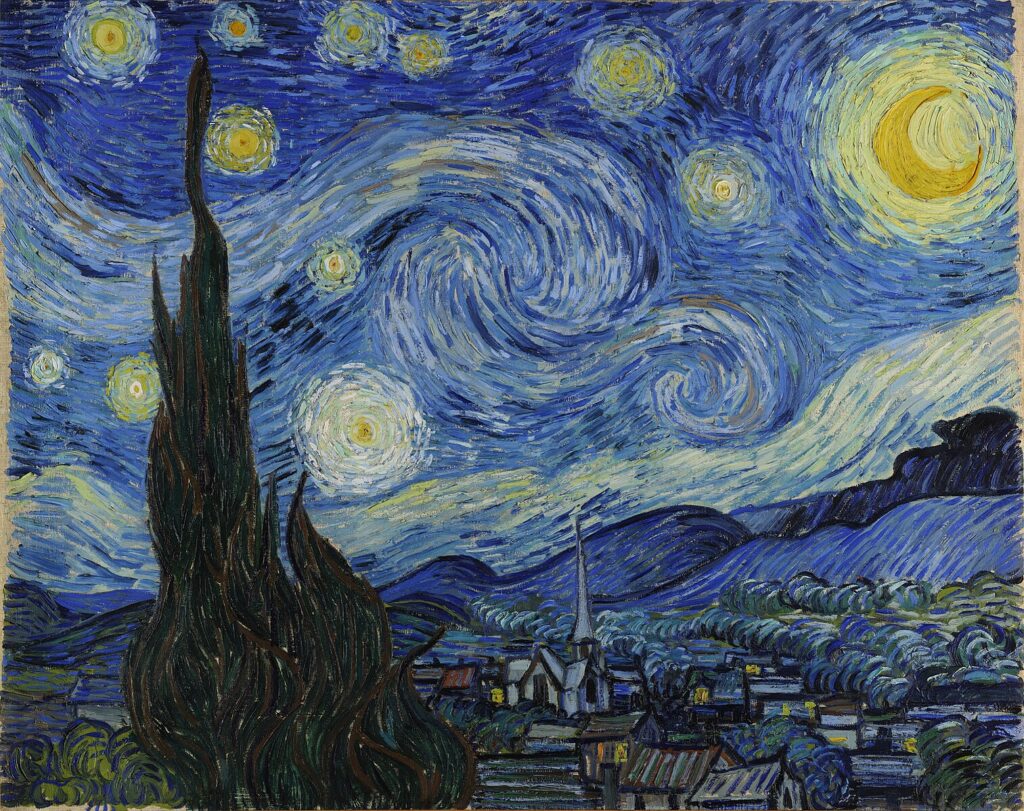
Vincent van Gogh’s “Starry Night” (1889) is a mesmerising portrayal of a starry night sky over a quiet village. The swirling patterns of the stars and the luminous crescent moon create a dynamic and dreamlike scene. Van Gogh’s emotional connection to the night sky and his personal struggles are reflected in the painting.
Starry Night is one of those versatile paintings that is genre-bending. It can be considered an Impressionist artwork and also a Pointillist or Modern art piece. The depiction of how starlight affects a provincial scene is captured like no other artist can like Van Gogh.
Water Lilies by Claude Monet

Claude Monet’s “Water Lilies” series, created over several decades, features an array of paintings that depict the water lilies in his garden at Giverny. These paintings are known for their vibrant colours and the way they capture the ever-changing play of light on the water’s surface.
Monet was deeply passionate about his garden at Giverny, which served as a constant source of inspiration. He devoted the latter part of his life to creating the “Water Lilies” series, producing over 250 individual works. Monet’s quest to capture the fleeting beauty of the natural world and the effect of light on water is evident in these masterpieces.
Bal du Moulin de la Galette by Pierre-Auguste Renoir

Pierre-Auguste Renoir’s “Bal du Moulin de la Galette” (1877) is another masterpiece that captures the lively atmosphere of the Moulin de la Galette. The painting features a bustling dance floor with people dressed in their Sunday best, enjoying a day of socialising and dancing.
Renoir’s work on “Bal du Moulin de la Galette” was not a single painting but a complex composition with numerous figures. He worked on it outdoors, setting up a studio in the garden of the Moulin de la Galette. Renoir painted his friends and acquaintances as models. The bursts of light falling from between the gaps of the unseen trees above is a brilliant example of including the unseen within the narrative.
Luncheon of the Boating Party by Pierre-Auguste Renoir
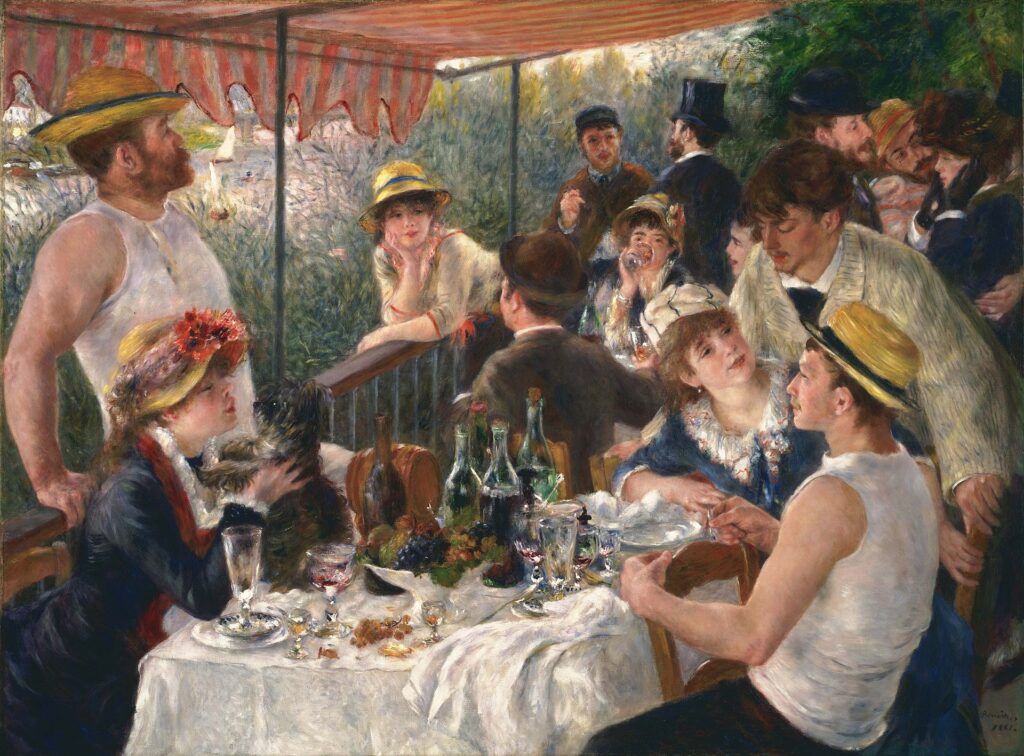
Pierre-Auguste Renoir’s “Luncheon of the Boating Party” (1880-1881) is a lively scene that captures a group of friends enjoying a leisurely luncheon by the river. The painting is celebrated for its rich colours and the individuality of each character in the composition.
“Luncheon of the Boating Party” is considered one of Renoir’s most ambitious works. He worked on the painting for more than a year, and it features a diverse cast of characters, including artists, writers, and friends. The attention to detail and the nuanced portrayal of each person in the painting reflect Renoir’s dedication to capturing the essence of the moment.
The Dance Class by Edgar Degas

Edgar Degas’ “The Dance Class” (1874) provides a glimpse into ballet, showcasing a dance class with ballerinas and their instructors. Degas, who was known for his depictions of dancers, captures the grace and discipline of the young ballet students.
Degas was fascinated by the grace of ballet and was a regular visitor to the Paris Opera. He often sketched and painted dancers during their rehearsals and performances. His commitment to accuracy in portraying the ballet’s intricate movements and the atmosphere of the scene is evident in “The Dance Class.”
Haystacks by Claude Monet
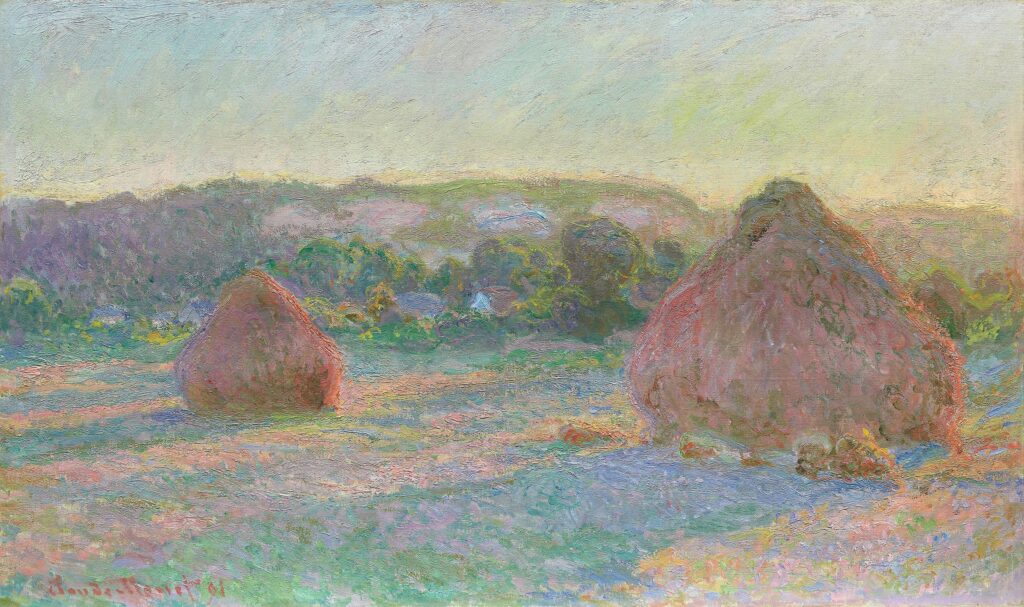
Claude Monet’s “Haystacks” series, painted between 1890 and 1891, features multiple renditions of haystacks in different lighting conditions. Monet’s goal was to explore the changing effects of light and colour on the same subject.
Monet’s “Haystacks” series is a testament to his dedication to studying the subtleties of light and its impact on the visual world. He was an obsessive artist who worked on multiple paintings simultaneously, changing canvases as the light conditions evolved. The result is a series of paintings that capture the essence of the same subjects in different moments.
Two Sisters (On the Terrace) by Pierre-Auguste Renoir
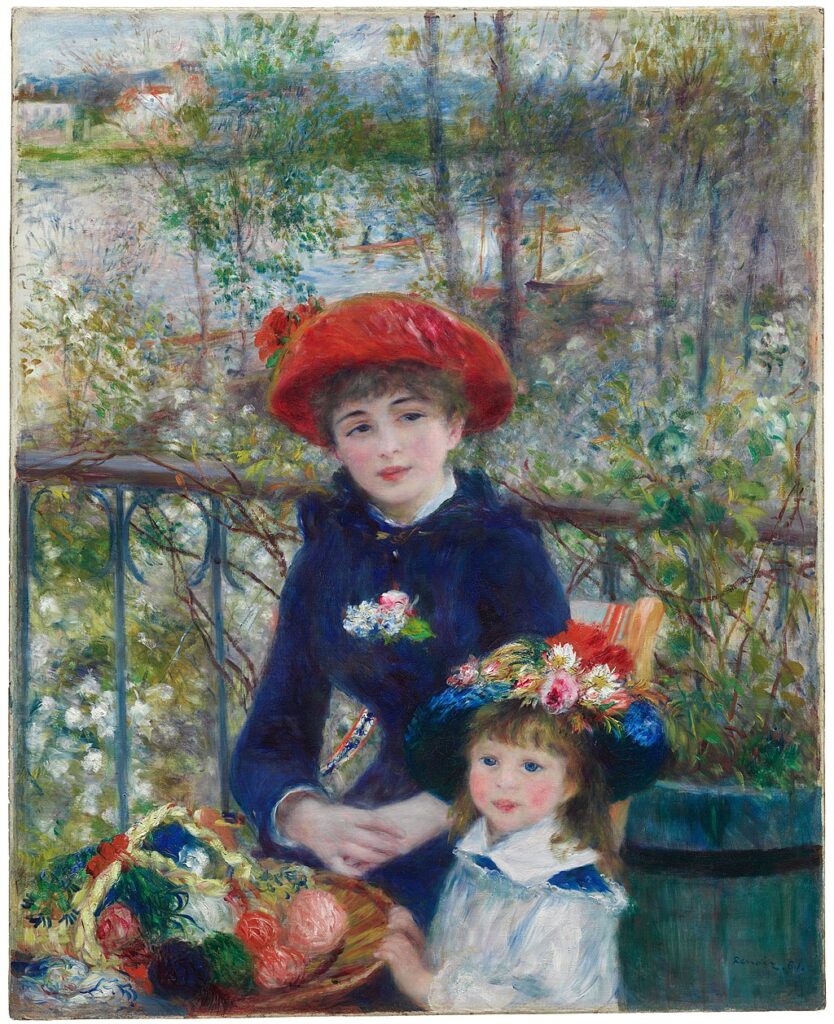
Pierre-Auguste Renoir’s “Two Sisters (On the Terrace)” (1881) is a charming portrayal of two young girls seated on a terrace overlooking a river. The painting exudes an air of tranquillity, and the use of light and colour adds a dreamlike quality to the scene.
Renoir’s models for “Two Sisters” were actually sisters, Jeanne and Edmée, the daughters of a seamstress he knew. He captured their innocence and the timeless bond between siblings in the painting. The use of dappled sunlight filtering through the trees adds depth and enchantment to the artwork.
Woman with a Parasol – Madame Monet and Her Son by Claude Monet
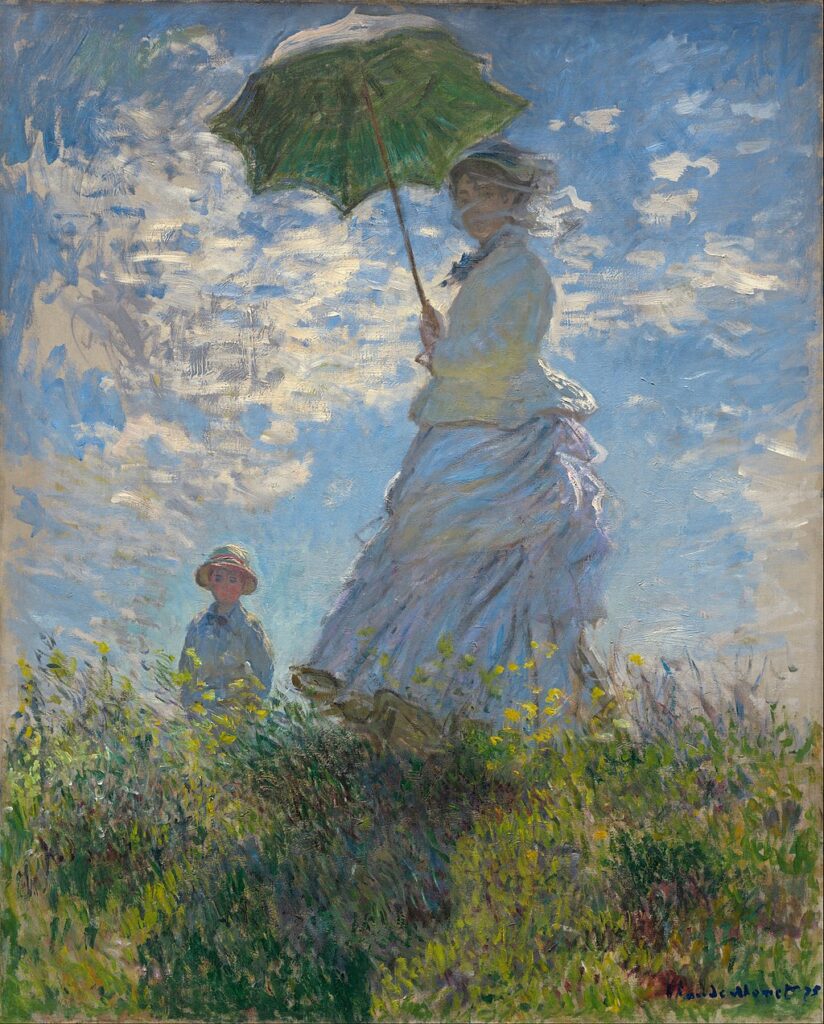
Claude Monet’s “Woman with a Parasol – Madame Monet and Her Son” (1875) is a vivid portrait of Monet’s wife and their young son. The painting captures a candid moment of a family outing. It has the wind rustling the parasol and the sun creating vibrant contrasts of light and shadow.
“Woman with a Parasol” was painted en plein air. Monet painted rapidly to capture the shifting effects of light. He often worked on multiple canvases at once to document the changes in the scene as the sun moved across the sky. The candid and spontaneous nature of the painting reflects the Impressionist pursuit of capturing the essence of a moment.
The Impressionist art movement revolutionised how we see art by focusing on the transient, the fleeting, and the everyday. These famous paintings of the Impressionist era offer a glimpse into the lives and creative processes of these remarkable artists. It reveals their dedication towards capturing the play of light, the essence of a moment, and the beauty of everyday life. The Impressionists’ ability to convey the ephemeral and the emotional through their works. It continues to captivate and inspire art lovers everywhere. This serves as a testament to the enduring power of the Impressionism art movement.
*Images from Wiki Commons







0 Comments